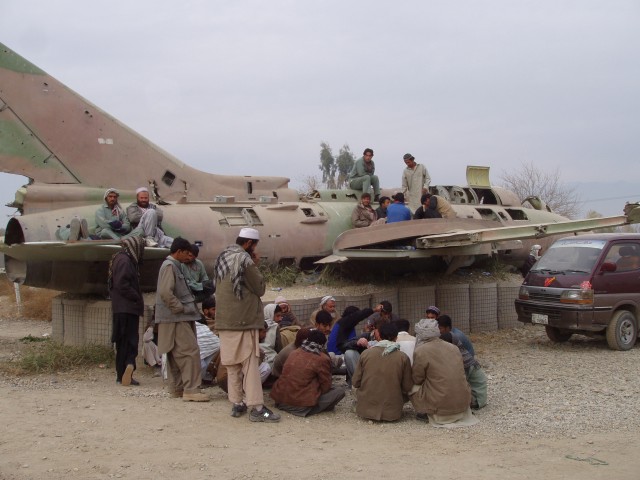JALALABAD AIR FIELD, Afghanistan (Army News Service, Dec. 23, 2008) - U.S. Soldiers are working with Afghan locals to install an international ring of communications that will span the nation and connect it to neighboring countries.
In the rural areas of Afghanistan, a communications network has been almost non-existent, officials said, and in some places what was there had been broken by years of war.
3rd Brigade Combat Team, 1st Infantry Division troops are working with locals to change that by installing fiber optics.
"With our satellites stretched to their limits, by fighting on two war fronts, the fiber ring will completely overhaul the current communication system by allowing the new system to flow very fast and efficient," said Maj. Patrick Dillinger, 3-1 communication officer.
This new system will bring a more efficient way of communicating to allied forces and build a foundation for the people by giving them the means to communicate with the world at a much faster rate, he said.
"The fiber ring extends outward from Bagram Airfield [Afghanistan] coming across all the major areas of operations and will end back at BAF," Dillinger said. "Then the fiber ring will extend its arms outward to its neighboring countries to expand the reach of communication."
"Fiber Optics communication is one of the most reliable networks to depend on while fighting the war in Iraq and Afghanistan," Dillinger said. "My job is to keep the command group of Task Force Duke connected to higher up [headquarters] and to have a system that will carry the next generation through future battles."
The way fiber-optic communication works, is by sending information from one place to another through pulses of light from an optical fiber.
"There are a lot of key players that came together on this project to make it happen; it's not just U.S. Forces that's backing this project," Dillinger said. "Also, the locals are taking an interest in the national fiber ring, because they see what they can receive in the coming future for communication."
1st Sgt. Howard Charles, 3-1 Special Troops Battalion, and a native of Alexandria, Va., threw himself head first into the management of construction, because of the importance of the project.
"The fiber ring will allow us to reach out to networks that are beyond our capability. I think it will bring in the tool to help them [Afghan locals] see what is out there," Charles, senior communication noncommissioned officer, said. "This system is the first of its kind in Afghanistan. This will make leaps and bounds for ISAF and the government of Afghanistan."
Dillinger also agrees that installing this system will make communicating better with the outside world and give U.S. Forces the edge in communicating with troops.
"This is ground-breaking work for a historical change in this country," Dillinger said.
(Sgt. Charles Brice serves with the 3rd BCT, 1st ID Public Affairs Section.)






Social Sharing